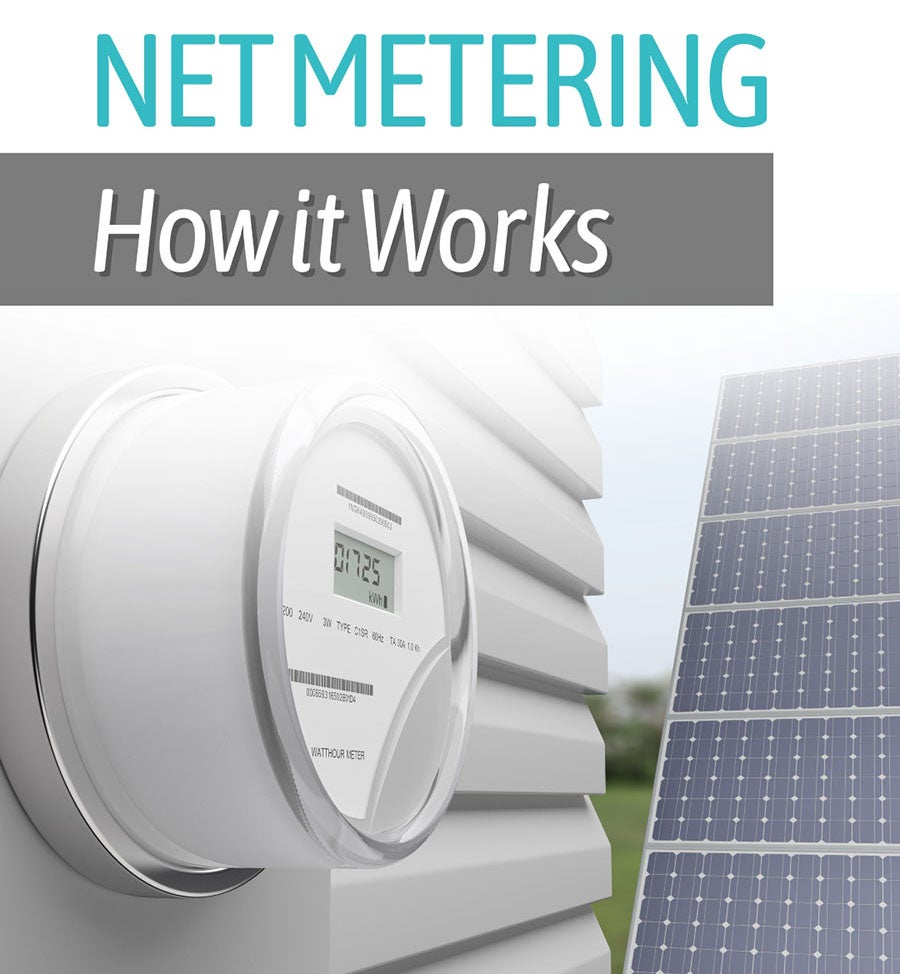How net metering works
Residential solar systems are becoming more attainable, and more homeowners are exploring rooftop/ground mount solar panels as an additional source for powering their homes. The amount of electricity produced by solar panels depends on several factors, including your home’s sunlight exposure, energy use habits and the size of the solar facility. In many cases, solar panels can generate an adequate amount of electricity to power your home, if sized properly.
What is net metering?
SLVREC offers a net metering program, which compensates solar owners for any excess electricity the solar facility produces. If a solar facility generates more energy than the home requires (typically during peak sunlight hours), the excess electricity will be fed back into the electric grid. In return, the homeowner will receive one credit for every one kWh sent to the electric grid. These credits are called “banked usage.” This billing arrangement is known as “net metering.” While solar is the most popular renewable generation source for homeowners, it should be noted that net metering can also be applied to small-scale wind, hydroelectric, geothermal and biomass systems that generate electricity.
How does SLVREC know how much to credit for the excess power?
When solar panels produce less electricity than the home requires, the electric meter runs forward, just as it would on a home without solar panels. But when the solar facility generates more electricity than required, the electric meter runs backward, and the excess power is sent back to the grid, generating credits. These credits will accumulate from month to month and be applied to your bill. At the end of the billing cycle, you are charged for the “net” energy used from the electric grid (energy consumption minus solar generation), where if your energy consumption is higher than your generation, and if you have available credits, then we will apply your credits to your bill. It’s important to understand that solar generation is only applied to the energy charge portion of your bill and does not include the full cost of maintaining grid infrastructure and REC service that supports your home year-round, which is covered by the customer and demand charges.
Net metering is especially helpful throughout the year, as solar production is typically higher during summer months and lower during winter months. It allows solar system owners to earn credits during high-production months and use them later in the year when solar output is lower.
Who uses the excess power generated by the solar system?
The electricity produced by solar doesn’t go directly to your neighbors. The energy flows back to the local grid managed by REC. We then apply the credits for any excess power you’ve contributed.
While generating electricity from the sun (and sending excess power back to the grid) is an exciting opportunity, it’s important to thoroughly research the details before installing solar panels or any other type of small-scale renewable energy system.
REC members who install solar and participate in net metering will need to sign an interconnection agreement, ensure a bi-directional electric meter is installed, and provide information about your system. Please visit our website HERE for more details.
You should also work with a reputable solar vendor to ensure generation estimates are realistic and that your home is equipped for the system.
It’s important to note that net metering will not eliminate your energy bill. Even if you generate as much electricity as you use, which is rare, you will continue to be billed for essential services such as grid access, service fees and other fixed costs (customer and demand charge) that are necessary to maintain a safe and reliable system.
If you’re interested in solar or would like to learn more about net metering, Isaiah Abeyta at SLVREC can help, 719-852-3538. By connecting with us first, you can gain a better understanding of the solar energy system, billing options and more.

